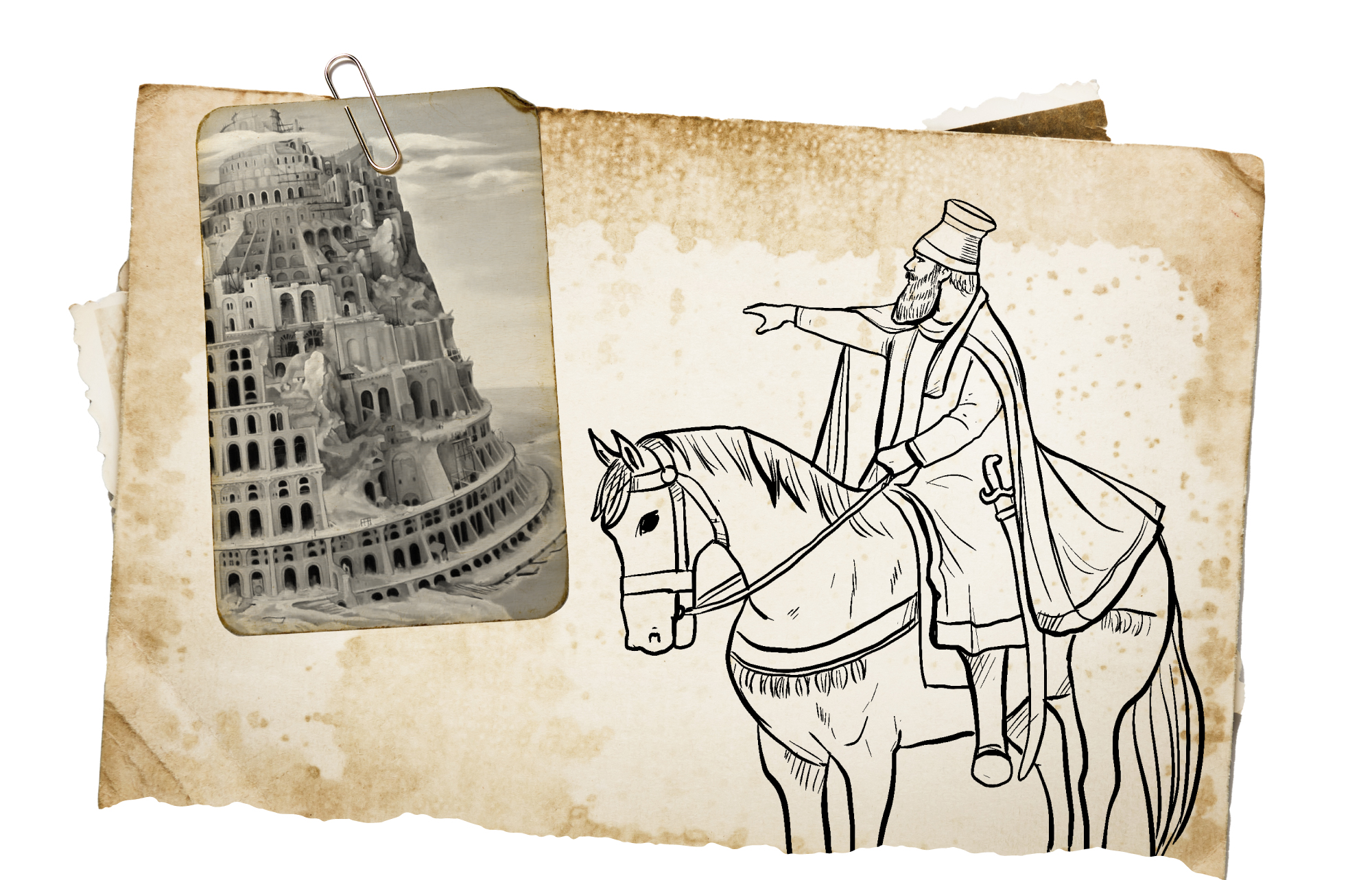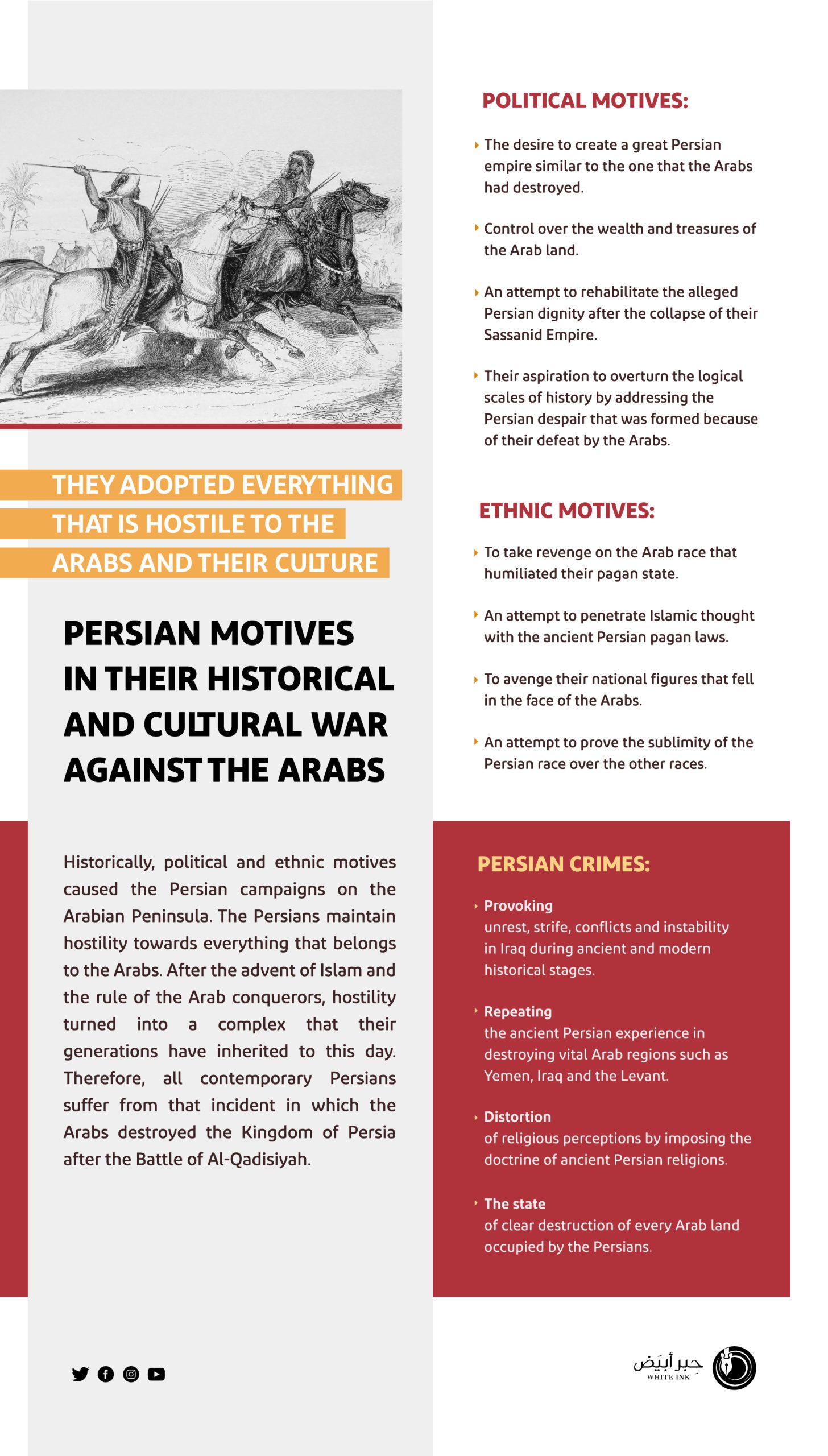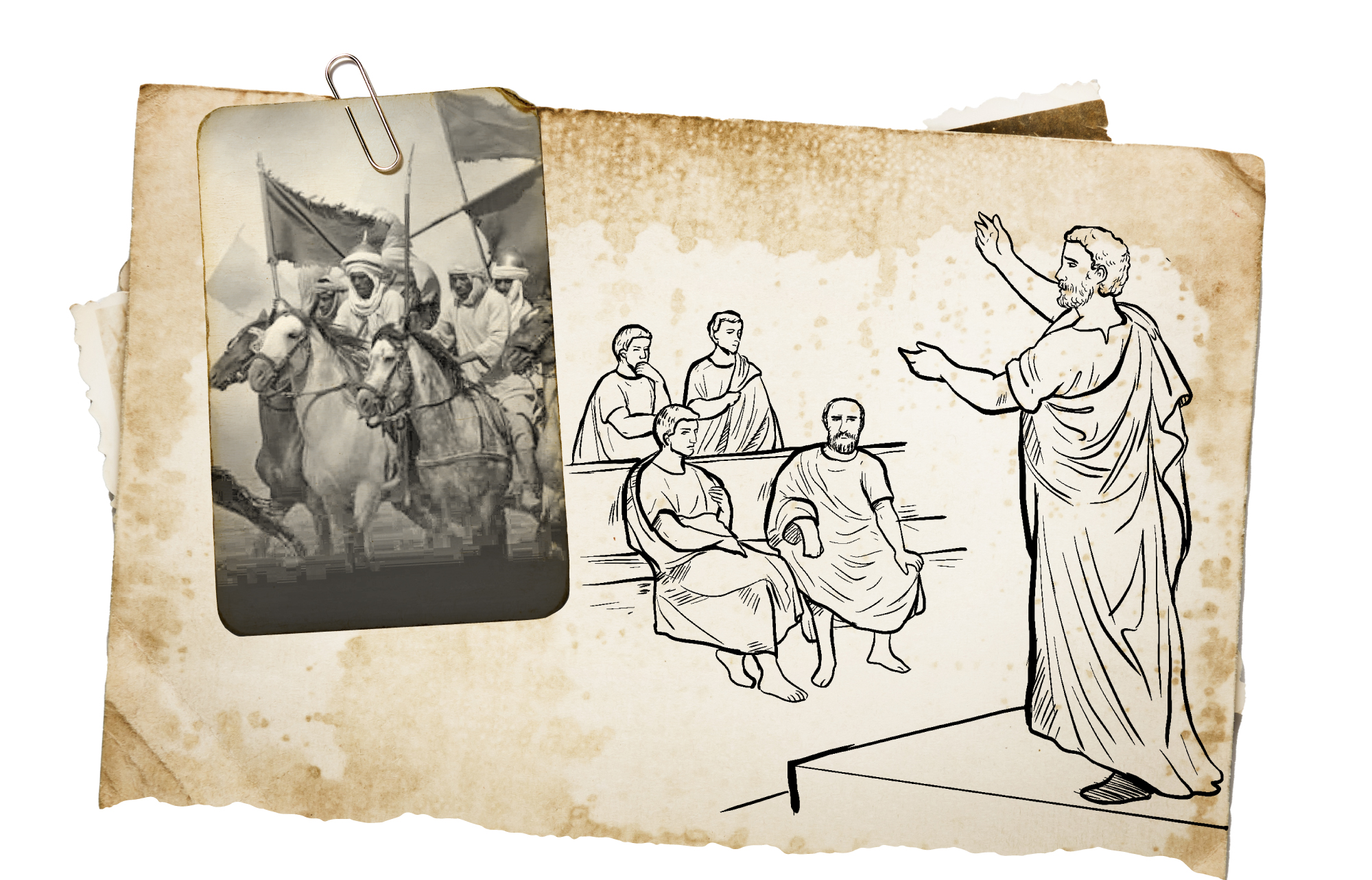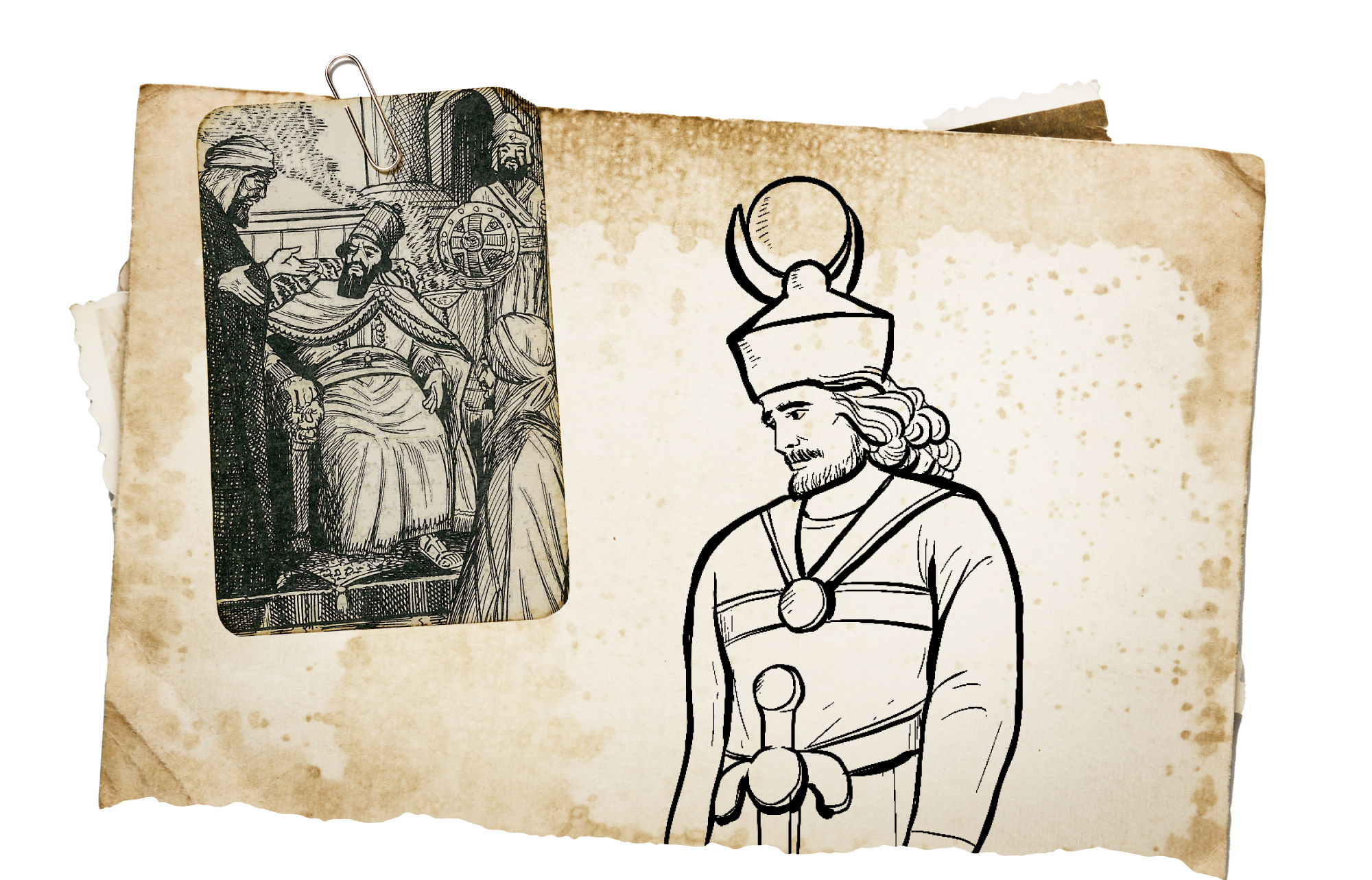
Starting from their ancient history,
the approach of the Persians was to make the land of Iraq a battlefield for their military conflicts in the region
From ancient times passing through the Middle Ages to modern and contemporary history, Persian-Iranian ambitions were and still are directed towards the Arab region. Iraq was the most Arab place that suffered from these ambitions. Perhaps Iraq’s common border with Iran imposed the tense reality between them.
During ancient history, Persia was superior thanks to the strength of its land armies compared to Arab Iraq. This made Iraq a battlefield for a number of Persian military campaigns, whether for control or as a terminal for Persian armies on their way to Levant and Egypt.
Therefore, from an early period BC, Iraq fell victim to the military conflict between Alexander the Great and the Persians, then its reality was renewed according to the conflicts of the Persians with all the parties connected to it from the West, including the historically violent conflict between Persia and Byzantium. This led to a phased devastation in the region.
The Persian danger to Iraq began with the establishment of the Achaemenid state in Iran, as Cyrus, the founder of the state, expanded westward, and then Mesopotamia was his first station in his western conflicts, especially as it facilitated land wars for his armies, so Cyrus rushed to invade Iraq and reach the Tigris and Euphrates rivers.
Cyrus and his armies succeeded in crossing the two rivers and reaching the city of Babylon, the capital of the Babylonian state, and imposed a siege on it. However, the course of the Euphrates River that surrounded Babylon was a natural dam that protected the city, as the Babylonians used it as a fortress and prevented Cyrus from rushing into Babylon.
The Persians used to make the Arabs a constant enemy since the beginning of the Achaemenid state.

Cyrus was unable to face this natural fortress of Babylon, so he resorted to a ploy by diverting the course of the Euphrates river from the city and preventing the water supply to make it dry up and turn into a valley to become a land way for his armies to push into the city. Thus, he was able to capture Babylon in (539 BC).
Since that time, the people of Babylon have suffered from the rule of the Persians, and the matter worsened when Babylon became a conflict zone between the Persians and the Greeks, especially during the era of King Darius and Alexander the Great. As a result of Persian abuse, the Babylonians welcomed the arrival of Alexander and his armies to rid them of Persian oppression.
In their periods of power, the Persians did not stop trying to assume the reality of the conflict with Iraq. Therefore, after they established the Sassanid state, their ambitions in Mesopotamia returned. Historical sources confirm that Ardashir, the founder of the Sassanid state, extended his influence to Iraq, which led to the migration of Tanukh tribes from Mesopotamia because they hated to submit to the Persian sultan.
The pioneer of Persian studies, the historian Abd Al-Wahhab Azzam, narrates a story from Persian literature showing how the Arabs hated submission to Persian domination. He mentions that during the reign of Shapur I (241-272 AD), the King of Hatra on the Euphrates Island, Al-Dayzn bin Muawiyah Al-Quda’i, known as “Al-Satrun”, attacked Persia. He captured Shapur’s sister, and in other accounts his aunt. In response, Shapur launched an attack on Mesopotamia and occupied the city of Hatra, as well as forcibly deporting many Arabs, taking them to live in Persia.
It is mentioned that the Arabs called him “Shapur with the shoulders”. The Armenian historian Homa Katouzian believes that this nickname came as a sign that he ordered the piercing of the shoulders of Arab prisoners to tie them with ropes.
Sources indicate that Arab subjects revolted against the Sassanid state prior to the Islamic conquest of Iraq. From here, the Arabs supported the Muslim conquerors, which facilitated the quick and easy victory of the Muslims in the Battle of Al-Qadisiyah.


- Ibrahim Zarqana and others, The Civilization of Egypt and the Ancient Near East (Cairo: Egypt Library).
- Hassan Pernia, The Ancient History of Iran from the Beginning to the End of the Sassanid Era, translated by: Muhammad Nour Abd Al-Moneim, and Al-Sibai Muhammad Al-Sibai (Cairo: National Center for Translation, 2013).
- Abd Al-Wahhab Azzam, The Links between Arabs and Persians and Their literature in Pre-Islamic Times and Islam (Cairo: Hindawi Foundation, 2012).
- Homa Katouzian, The Persians: Iran in the Ancient, Medieval and Modern Times, translated by: Ahmed Hassan Al-Ma’ini (Beirut: Dar Jadawel, 2014).


After the Arabs humiliated their history,
the Persians sought to achieve religious and doctrinal professionalism to meet their ethnic goals
Ethnic structures used to fall victim to political agendas that regard ethnicity as a popular incubator and a factor for unifying popular components, especially in light of a worried strategic environment, unstable geographical borders, and an expansionist ideology that consolidates the idea of the national state and territorial borders.
In this context, we note that there are historical accumulations that contributed to crystallizing and strengthening the “ethnic ego” of the Persians and directing it to subjugate a group of areas in which the Persians saw their vital extension, as well as to confront the Arab Islamic conquest that was able to bring the Persians out of the darkness of their ignorance to the light of guidance and the guidance of Islam.
The Persian authorities contributed to strengthening the ethnic association and raising it to the point of reverence. The Persians saw themselves as superior and better than all, and their homeland was their priority. They believe that their Indo-European race is the purest of human races, which is reflected in the nature of their dealings and their view of the Arabs.
In this regard, in his book “The Writer’s Etiquette”, the Persian historian Abu Bakr Al-Souli describes some manifestations of Persian ethnic superiority, saying: “A Persian entered into a debate with an Arab. The Persian said: We never needed you for work or a name. The domination has become yours, but you were not able to dispense with our services in your business and language, even if your food, your drinks, your books, and what is in them follow what we have named”.
During the historical stages, the ruling authorities in Persia contributed to embracing a group of religious expressions that contributed to strengthening the ethnic factor and separating it from the rest of the other ethnic expressions. Through the previous rooting, we saw how the Persian governments supported the religions that were victorious for ethnicity, such as Zoroastrianism, at the expense of the communist-oriented religions such as Mazdakism and Khurramitism.
Some analysts may be mistaken when they present the Persians or Iran today as a political entity influenced by an Islamic doctrine. They dropped the ethnic factor from their analyzes, as Iran turned into an entity professionalizing religion to achieve its ethnic goals. Here, it does not matter whether the reference is Shiite, Bahai or Zoroastrian, as what is important is the unity and supremacy of the race in the face of the other races that impede the achievement of the illusions of expansion and domination.
The Persian hatred of everything that is Arab has moved from a mere behavioral accumulation to a material move aimed at subjugating the Arab countries to the politicians of Persia, who have not yet realized how the Arabs succeeded in humiliating Khosrau and ending his rule. In this regard, we find one of the researchers confirming this by saying: “The Persians’ hatred of the Arabs has another reason in addition to their terrible defeats. In their culture, the Persian element is the master, and the Arab is only fit to be a slave and vassal. Suddenly, the Arab overthrew the crown from the head of Khosrau and overthrew his empire, humiliated their leaders and destroyed their pride”.
Persian hatred turned from a mere behavioral accumulation to a movement aimed at the policy of subjugating and destroying the Arab countries.

The doctrinal accumulations contributed to strengthening the ethnic tendency of the Persians, and then it became entrenched after the Islamic conquests that were motivated by religious motives away from every racist tendency that contradicts the noble Prophet’s guidance, who considered fanaticism to race, color or language as a remnant of the pre-Islamic era that Islam warned against following.
From this point of view, the epics of Dhi Qar, Al-Qadisiyah, Al-Jisr “Battle of the Bridge”, and Nahawand were historical stations that contributed to the overthrow of the Sassanid throne and the end of their empire. The Arab epics with the Persians also constituted a historical turning point in the Ideologicalization of the Persian hatred against everything that is Arab, and it is the hatred that was seized by some who claim sectarianism and who worked to racialize the doctrine and transform it into a new religious doctrine in the service of the Persian agenda, even if they falsely claimed their support for any religious given.
Traces of Persian hatred remained for centuries, and this was demonstrated by one of the prominent Iranian figures, a professor at Tehran University, Sadegh Ziba, when he expressed this fact by saying: “We have not yet forgotten our defeat by the Arabs in Al-Qadisiyah. There is hatred in the depths of our hearts towards the Arabs, as if it is fire under the ashes that turns into flames whenever the opportunity arises”.
If, according to Trotsky, hatred remains one of the most important factors in the class struggle, then the hatred of the Persians has risen to the level of being the main factor that pushes them to wage war against the Arabs and to work to overthrow their original religious approach. It is the goal that, according to their claim, can only be achieved by overthrowing the center of power of the Arab and Islamic world.


- Hassan Pernia, The Ancient History of Iran from the Beginning to the End of the Sassanid Era, translated by: Muhammad Nour Abd Al-Moneim, and Al-Sibai Muhammad Al-Sibai (Cairo: National Center for Translation, 2013).
- Abd Al-Wahhab Azzam, The Links between Arabs and Persians and Their literature in Pre-Islamic Times and Islam (Cairo: Hindawi Foundation, 2012).
- Muhammad Al-Souli, The Writer’s Etiquette (Cairo: The Salafi Printing Press, 1341 AH).
- Homa Katouzian, The Persians: Iran in the Ancient, Medieval and Modern Times, translated by: Ahmed Hassan Al-Ma’ini (Beirut: Dar Jadawel, 2014).

It is accompanied by deliberate forgery by their historians
The Persian historical encroachment on everything that is Arab
The Persians completely ignored their ethnic extension to the east with the countries of India and the Afghans, and to the north with the countries of the Uzbeks and Georgia. They focused their ambitions towards Iraq, the Arabian Gulf and the Arabian Peninsula, which represents for them the other side of the region’s geography, and insisted on expanding towards the land of the Arabs throughout their history.
Although the relationship between the Persians and the Arabian Peninsula is largely ambiguous because most historical sources did not focus on the exact nature and details of the relationship, the most prominent thing present in the Persian mentality towards the Arabs is the defeat of Khosrau Anusharwan, their last king, in the famous Battle of Al-Qadisiyah. At that time, the Arab Muslim knights set out from their Arabian Peninsula to seize two great empires, one of which was the Persian Empire. This collapse, which they faced at the hands of the Bedouin Arabs, still hurts the extremist Persians to this day.
More than 1400 years have passed since the collapse of the empire of Khosrau, but it was not without some fighting and Persian attempts to return and seize parts of the Arabian Peninsula. This was evident in the past two hundred years when Persian Iran occupied some of the Arab islands, as well as their attempts to destabilize Bahrain and Yemen.
The social and ethnic relationship between the Arabs and the Persians remained at a permanent separation, especially since the bloody legacy between them is very large, in addition to the pain felt by the Persians after the collapse of their empire at the hands of the Arabs. However, the encroachment of the Persians and their teachings in dealing with the Arabs was the norm, as they view the Arabs of the island as Bedouins from the desert. The Arabs will not forget how the Persian king Shapur II was humiliating Arab captives and that is why he was called “Shapur with the shoulders”. He would pierce the shoulders of the captives and crucify them in the mountains.
The author of the book “The Links between Arabs and Persians and Their literature in Pre-Islamic Times and in Islam” explains the relationship between the Arabs and the Persians. He divided this into two parts: the pre-Sassanid era, which is myths, and the post-Sassanid era, which is history or close to history. Abdel Wahab Azzam reveals the dominance of myths over historical narratives in ancient history, which undoubtedly resulted from the Persians themselves being influenced by ancient religions and similar myths and philosophies related to the universe.
In a brief reading of the history of the Persians with the Arabs, the Iranian researcher Nasir Pourpirar reveals that the Persian historians falsified the relationship with the Arabian Peninsula: “The Arabian Peninsula has never been subjected to foreign occupation. Allah has saved the Arabian Peninsula from invaders since the dawn of history, while most of the countries of the world were under occupation. A single attempt has been made since the dawn of history until today. That was in the Elephant Year and Abraha failed. Allah sent flocks of birds (called Ababil), which attacked Abraha’s army with stones of Sijjil (stones of hard clay) and made them like eaten straw”. He refutes this further in his explanation of the myth of King Shapur II. The myth talks about his conquest of Hajr and Bahrain, penetrating the deserts of the Arabian Peninsula towards Al-Yamamah and Medina. Difficult geography refutes this myth despite the invasion of the east coast of the island because this is exhausting for the army. These campaigns, if true, must have been carried out through internal allies, as it is difficult to imagine that the Persians, alone and without assistance, would cross the vast valleys in pursuit of the Arabs, who are the masters of the desert.
The Persians, no matter how well-trained and organized their army was, would not withstand the thirst, the heat of the desert and its harsh and strict climate. If Shapur had the ability to penetrate into the desert of the Arabian Peninsula, he would not need to seek the help of Imruʾ Al-Qais to be his deputy over Iraq. Although Iran and Iraq are adjacent, Shapur II could not control Iraq except through Imruʾ Al-Qais. On the contrary, when the Arabs invaded Iran, their governors were from among the Arabs, such as Ziyad Ibn Abih, the deputy of Ali bin Abi Talib over Persia.
This was not the only invasion that proved the ambitions of the Persians in the Arabian Peninsula. The Persians seized Yemen in the south of the Arabian Peninsula during the period (575-628 AD) after Yemen was under the rule of the Abyssinians, from whom the Yemenis suffered. Seeking help from another foreigner to save them was not the best solution, as the Persian ambitions were present to occupy Yemen as well.
Khosrau, the king of Persia, sent prisoners and mercenaries to help Seif bin Dhi Yazan in his war against the Abyssinian occupier. After defeating the Abyssinians, the Persian prisoners became rulers who would take tribute in favor of their king Khosrau. Seif bin Dhi Yazan was forced to be a subordinate ruler of the king of Persia. However, this did not last, as the Persian kings began to rule directly after they turned against Dhi Yazan. Wahrz, the Persian deputy of Khosrau, took over. When he died, his son, ِAl-Marziban, succeeded him. When he also died, his son “Al-Tenojan Ibn Al-ِMarziban” took over. Subsequently, he was dismissed and Bazan took power.
In his explanation of the ambiguity of the Persian period in southern Arabia and its confusion and overlap with other religions and races, Abdul Wahab Azzam says: “The Persian army tried to seize Yemen in the second century AD, and they were allowed to seize some of its cities in the third century, then the Himyarites drove them out. When the army converted to Christianity in the fourth century, the Romans supported them over the Himyarites, and they occupied Yemen in 374 AD. It appears that the Persians aspired to Yemen since then, as the conflict that raged between them and the Romans since the establishment of the Sassanid state would have taken them to Yemen after the Romans and the Abyssinians conspired against it”.
Azzam adds: “We do not know anything about the news of the Persians in Yemen before the sixth century A.D. The followers of Dhu Nuwas embraced Judaism and forced the Christians to convert Judaism and tortured them, so the Romans and Abyssinians became angry because of that. Emperor Justinian supported the Abyssinians and directed them to Yemen until Seif bin Dhi Yazan appealed to Khosrau Ansharwan, who supplied him with an army accompanied by ships in the Gulf to Oman, then he marched on land and the people of Yemen joined him and defeated the Abyssinians. Seif bin Dhi Yazan took over the country until his Abyssinian guards killed him, so Persian governors took over the country until Islam came”.
The conclusion is that the Persians did not settle in the Arabian Peninsula and were not able to, but all their attempts failed thanks to the power of the Arabs. Their language was not established in the Arabian Peninsula, despite their occupation of some parts of it for long periods of time, and there are no urban traces for them in the areas they occupied, unlike other nations such as the Romans. Perhaps this explains the nature of the present Persians who destroy any country they enter and turn it into a degraded country. In the end, the Persians constitute an aspiring and greedy nation, but they do not carry a cultural heritage to benefit the others.
From their ancient history until today, the Persians destroyed all the Arab lands they entered and turned them into ruins.



- Hassan Pernia, The Ancient History of Iran from the Beginning to the End of the Sassanid Era, translated by: Muhammad Nour Abd Al-Moneim, and Al-Sibai Muhammad Al-Sibai (Cairo: National Center for Translation, 2013).
- Abd Al-Wahhab Azzam, The Links between Arabs and Persians and Their literature in Pre-Islamic Times and in Islam (Cairo: Hindawi Foundation, 2012).
- Homa Katouzian, The Persians: Iran in the Ancient, Medieval and Modern Times, translated by: Ahmed Hassan Al-Ma’ini (Beirut: Dar Jadawel, 2014).




